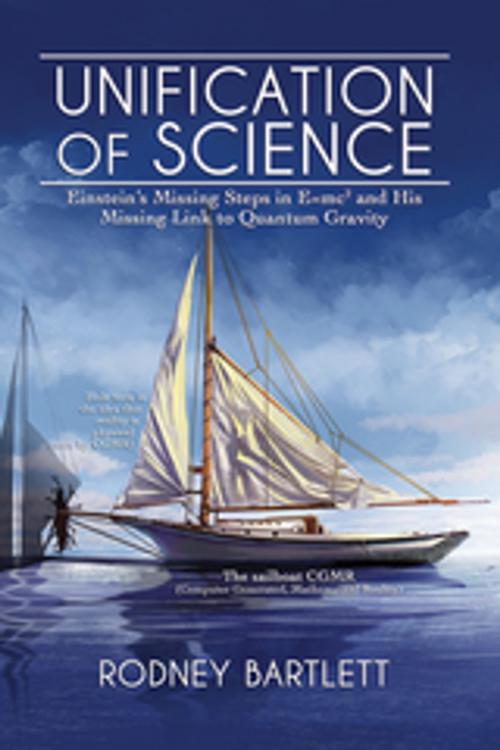| Author: | Rodney Bartlett | ISBN: | 9780578448558 |
| Publisher: | Capstone Media Services | Publication: | January 14, 2019 |
| Imprint: | Capstone Media Services | Language: | English |
| Author: | Rodney Bartlett |
| ISBN: | 9780578448558 |
| Publisher: | Capstone Media Services |
| Publication: | January 14, 2019 |
| Imprint: | Capstone Media Services |
| Language: | English |
This book adopts the view that the universe is infinite and eternal – but scientifically created. This paradox of creating eternity depends on the unimaginably advanced electronics (whose binary digits of 1 and 0 base- 2 mathematics) developed by future humanity. Those humans will develop time travel, plus unbelievably advanced computer simulations that use so-called “imaginary” time and infinite numbers like pi. They will also become the El or Elohim (names used by various religions to mean “God” or “the gods”). As astronomer Carl Sagan wrote in his book “God” or “the gods”). As astronomer Carl Sagan wrote in his book “Pale Blue Dot – A Vision of the Human Future in Space”, “Many religions teach that it is the goal of humans to become gods.” The incredible electronics and programming of thousands of years from now will surely result in binary digits giving rise to a vector-tensor-scalar relationship that unites an infinite Earth with the Higgs boson and an Elohim that would be termed supernatural today, though their infinite abilities are actually natural outcomes of progress.
When I first started thinking about writing this book, it was intended to be entirely about science. But as the book developed; the approach of unifying all the sciences in the universe into one thing grew into viewing everything as one thing. All objects and events on Earth, in space, and in time (including the inevitability of world peace and immortality, the human condition and religion) are just one thing – like the objects in a computer image seem to be a lot of separate objects but are really just one thing (strings of binary digits). The first part of this book (every part except for the final chapter) was freely published in paperback form by Lambert Academic Publishing in early 2018. The second portion consists of a single chapter (“Mathematical Nature of Reality…”) which partly revises and summarizes Part 1. The two parts are being freely re-published by Capstone Media Services later in 2018 (now). Part 1 treats Dark Matter as gravitational push holding galaxies together while Part 2 attributes Dark Matter to material particles in another large-scale dimension. This book is intended for the non-specialist reader, with the aim of keeping jargon and math’s to a minimum.
This book adopts the view that the universe is infinite and eternal – but scientifically created. This paradox of creating eternity depends on the unimaginably advanced electronics (whose binary digits of 1 and 0 base- 2 mathematics) developed by future humanity. Those humans will develop time travel, plus unbelievably advanced computer simulations that use so-called “imaginary” time and infinite numbers like pi. They will also become the El or Elohim (names used by various religions to mean “God” or “the gods”). As astronomer Carl Sagan wrote in his book “God” or “the gods”). As astronomer Carl Sagan wrote in his book “Pale Blue Dot – A Vision of the Human Future in Space”, “Many religions teach that it is the goal of humans to become gods.” The incredible electronics and programming of thousands of years from now will surely result in binary digits giving rise to a vector-tensor-scalar relationship that unites an infinite Earth with the Higgs boson and an Elohim that would be termed supernatural today, though their infinite abilities are actually natural outcomes of progress.
When I first started thinking about writing this book, it was intended to be entirely about science. But as the book developed; the approach of unifying all the sciences in the universe into one thing grew into viewing everything as one thing. All objects and events on Earth, in space, and in time (including the inevitability of world peace and immortality, the human condition and religion) are just one thing – like the objects in a computer image seem to be a lot of separate objects but are really just one thing (strings of binary digits). The first part of this book (every part except for the final chapter) was freely published in paperback form by Lambert Academic Publishing in early 2018. The second portion consists of a single chapter (“Mathematical Nature of Reality…”) which partly revises and summarizes Part 1. The two parts are being freely re-published by Capstone Media Services later in 2018 (now). Part 1 treats Dark Matter as gravitational push holding galaxies together while Part 2 attributes Dark Matter to material particles in another large-scale dimension. This book is intended for the non-specialist reader, with the aim of keeping jargon and math’s to a minimum.















